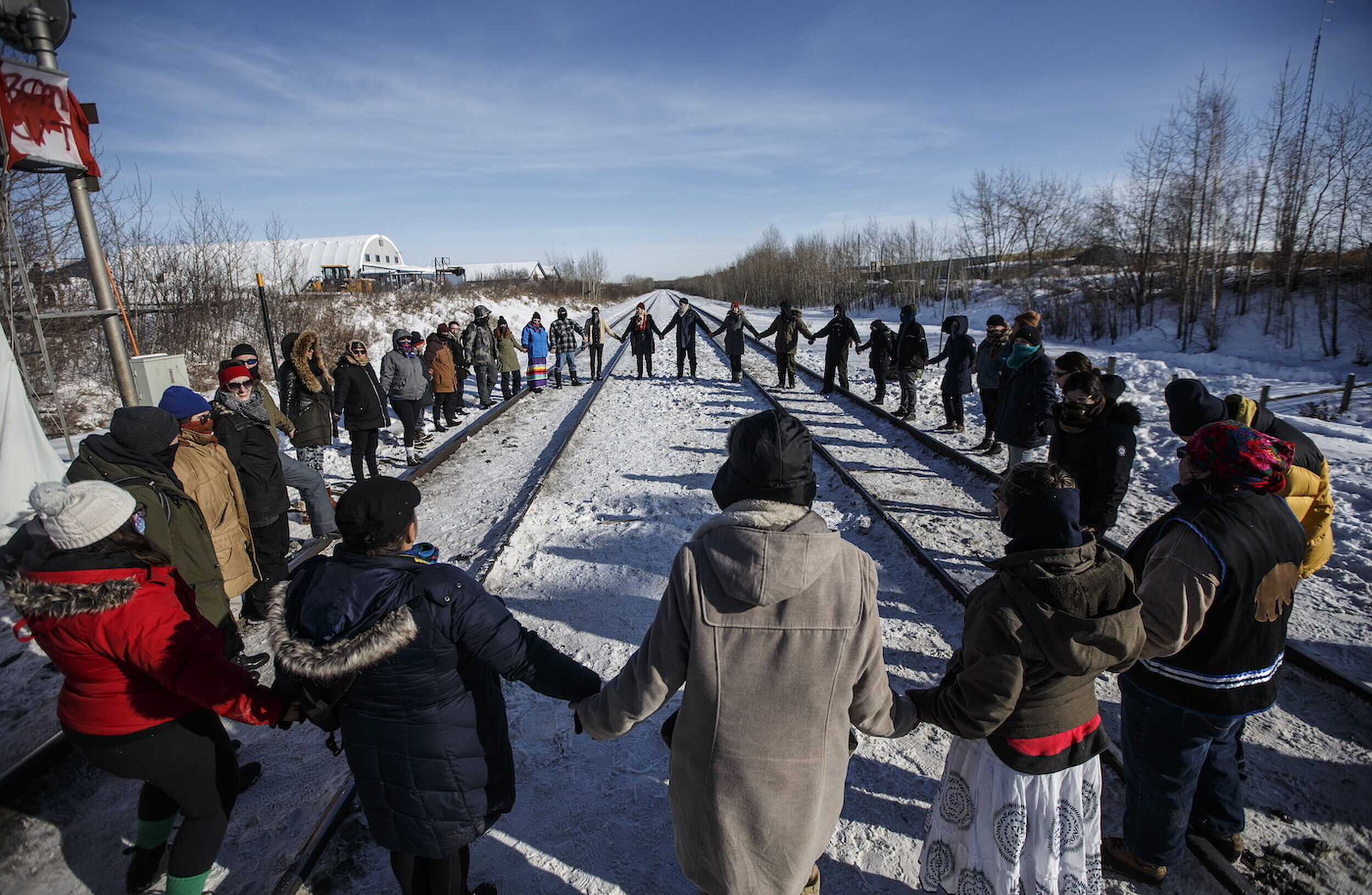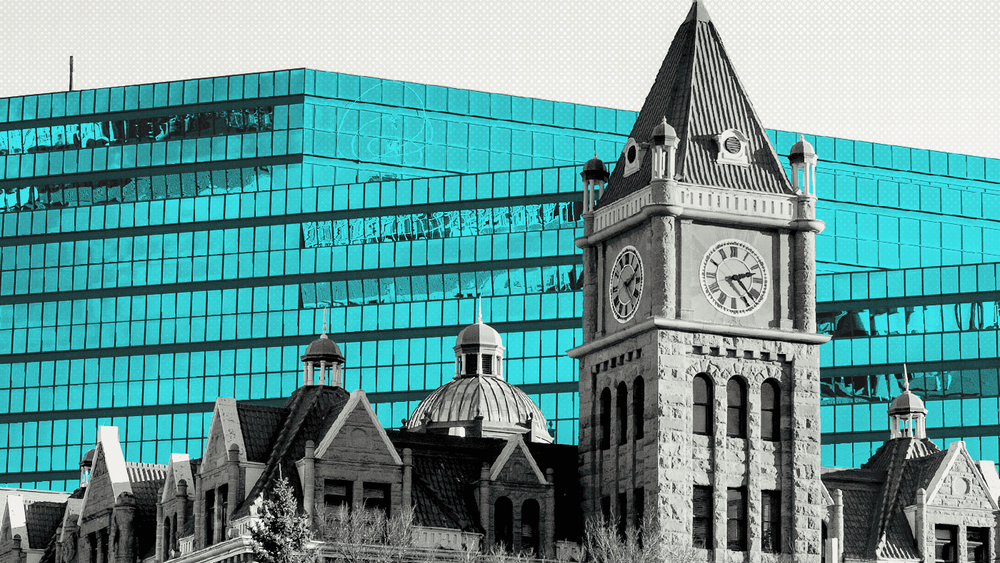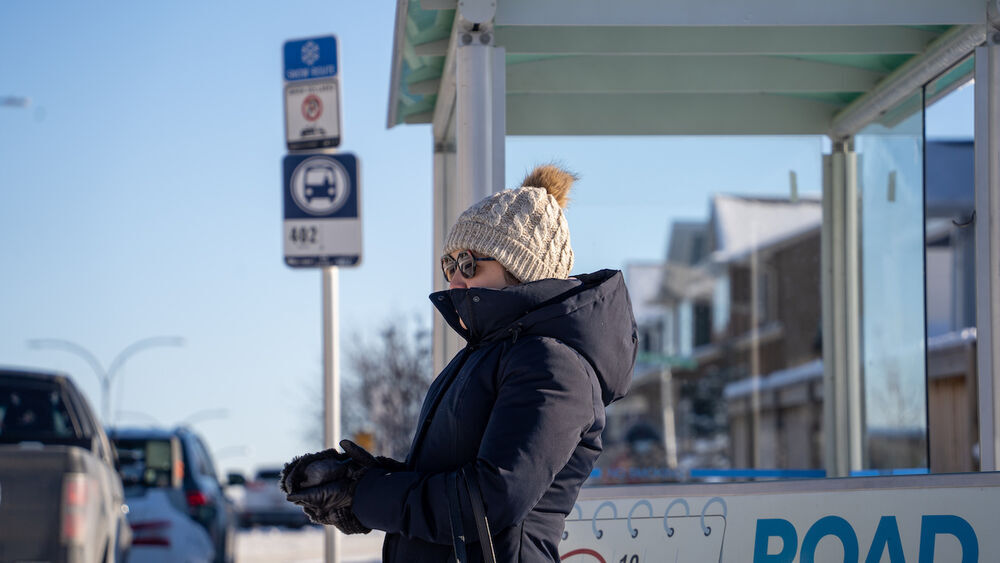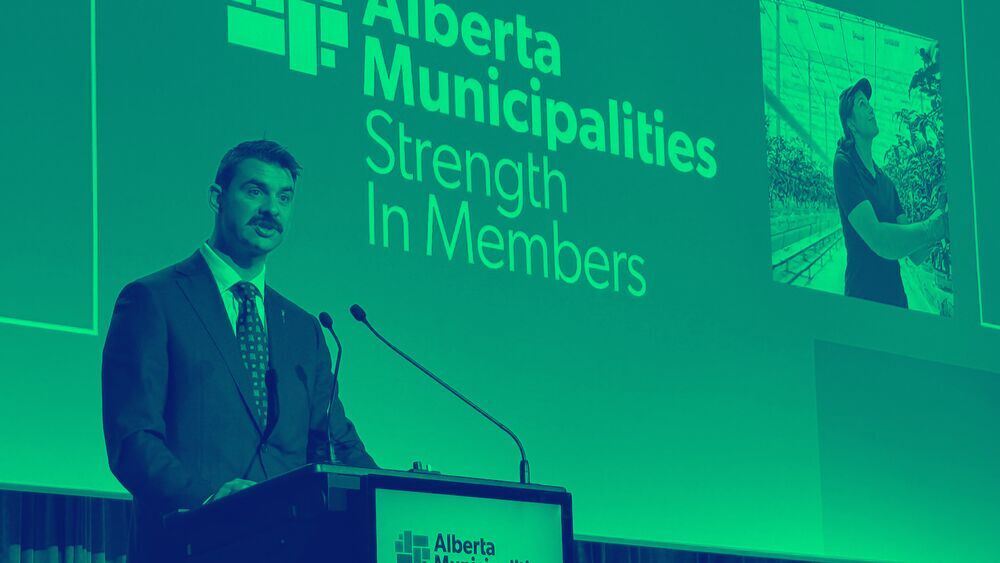
Blockade at a CN rail line west of Edmonton in February 19, 2020. Photo: The Canadian Press/Jason Franson
ANALYSIS: The truth behind the UCP’s anti-protest law
Bill 1 is an intimidation tactic against Indigenous peoples.
By now, if you’re a sentient human with an internet connection, you’ve probably heard about Alberta’s Bill 1, also known as the Critical Infrastructure Defence Act. Jason Kenney says it’s to discourage lawlessness. Others say it’s an infringement of civil liberties.
It’s much more complicated than that. It is impossible to properly understand Bill 1, which officially became law this week, without considering the racism behind it.
Let’s start with the basics.
Bill 1 makes it illegal for anyone to protest on essential infrastructure, including entering onto, damaging, obstructing, interfering with the construction of said infrastructure, or even encouraging someone to do those things.
What’s essential infrastructure? Whatever the UCP says it is. No, seriously.
There’s a list of categories included in the legislation, such as highways, pipelines, railways, refineries, utilities, dams, and so on, all of which have their own legal definitions—a “highway” under the Traffic Safety Act, for example, includes all city streets, sidewalks and ditches.
In addition to this sweeping list, the Critical Infrastructure Defence Act grants cabinet the power to declare things “essential infrastructure” as it likes. It sounds a bit Pythonesque—“Look, everyone knows this infrastructure is absolutely, utterly essential, we just forgot about it when we drafted the law”—but its absurdity doesn’t make it any less dangerous.
People who understand what this law does have been more than a little freaked out by it, particularly constitutional scholars, and Indigenous and activist groups.
David Khan, the Alberta Liberal leader and constitutional lawyer who specializes in Indigenous rights, posted a Twitter thread detailing his concerns. One petition opposing the bill has hundreds of thousands of signatories. Many have noted the brazenness of the legislation in seeking to curtail civil disobedience.
One of the most odious aspects of Mr @jkenney's draconian, authoritarian #Bill1 (Critical Infrastructure Defence Act) is it criminalizes peaceful public protests/marches down city streets–like the #BLM protests in #YYC yesterday
— David Khan (@Dave_Khan) June 3, 2020
I explain how dangerous this is below– #THREAD 1/12 pic.twitter.com/dzzBV27eXr
“The veil has been lifted and we’re starting to see what the underbelly of this beast looks like,” said Eriel Tchekwie Deranger, a co-founder of Indigenous Climate Action, referring to the government.
“It’s not surprising, it’s just out in the open for everyone to see.”
While the implications of this law for civil liberties and the right to protest are troubling—underscored by the legislation receiving royal assent as Albertans joined Black Lives Matter protests—the act is best understood as an intimidation tactic against Indigenous peoples.
Bill 1 was the Alberta government’s direct response to blockades across the country earlier this year in support of the hereditary chiefs of the Wet’suwet’en nation, who refused consent to the Coastal GasLink (CGL) pipeline being constructed through their traditional territory. (For more background on the Wet’suwet’en/CGL conflict, these articles are a good place to start.)
The veil has been lifted and we’re starting to see what the underbelly of this beast looks like.
Due to various blockades, pipeline construction was disrupted and the CN railway was effectively shut down for periods of time, including in Edmonton. These protests broke the law, but were non-violent, which is the definition of civil disobedience.
The UCP was outraged by these protests, and in response put forward Bill 1 in February.
Pierrot Ross-Tremblay, a member of the Innu nation and a constitutional scholar at the University of Ottawa, says the law is nothing new: it fits in perfectly with the “old colonial Canadian mindset... of representing First Peoples as a threat to Canadian national security, of criminalizing and banning resistance as if it was a disease, of limiting the means of pressure to enforce non-consent to projects that are destructive to the environment but also the generations to come.”
The racist roots of anti-Indigenous legislation
But to really understand the Critical Infrastructure Defence Act, we need to zoom in on two things: what the protests are about, and why blockades are used as a tactic.
The blockades in support of the Wet’suwet’en hereditary chiefs were only superficially about a pipeline, or legal rights, or consultation. The more important underlying issue was Canadian white supremacist colonialism. It's not a phrase that pops up often on the evening news or in school textbooks.
There’s endless literature that explains these concepts far better and more thoroughly than I can do here. But for now, let’s briefly define each idea separately.
"Colonialism" is when a country forces its authority over other peoples or territories and rules them for its own interests. And "white supremacy" simply means a belief that whites are inherently superior to non-whites. That’s it. That’s the entirety of the definition in my dictionary.
While Canadians have done a superb job over decades of congratulating ourselves for abolishing racism, the reality is that from its founding to this day Canada has been designed to benefit white people at the expense of non-white people.
We are, after all, a country that commissioned a Truth and Reconciliation Commission to produce a multi-volume report on the horrors we committed in residential schools, but stopped reading after the part about doing land acknowledgements.
When confronted with inarguable facts about the systemic murdering of Indigenous women, we pulled out our dictionaries to argue that it didn’t qualify as genocide.
We create this façade that everything is fine, but underneath the tensions are real.
“It’s the tenets of white supremacy,” said Deranger. “We create this facade that everything is fine, but underneath the tensions are real.”
As much as Canada is about hockey and maple syrup, we are also about the erasure of Indigenous peoples.
Each Indigenous protest or blockade is thus framed as a separate, isolated, disconnected issue or event: it’s a lot easier to dismiss the Wet’suwet’en conflict as “lawlessness” when it’s presented as a mere pipeline dispute rather than part of a fight for justice stretching back centuries.
(Just to be clear, while the UCP’s approach is particularly egregious, all mainstream political parties, including the Alberta NDP, have kept Indigenous rights subservient to corporate interests.)
The legality of injustice
Alright, so it’s about a lot more than one pipeline. What about the decision to use blockades?
Both the premier and his justice minister, Doug Schweitzer, have invoked their fealty to the rule of law as their primary complaint about the blockades and the primary justification for investing cabinet with the power to restrict civil liberties.
Let’s set aside the disturbing attempt to equate "legal" with "just"— see: residential schools, Canadian slavery, Japanese and Ukrainian internment, Alberta’s eugenics program, etc.—because it’s really just misdirection.
From the UCP’s perspective, the problem wasn’t that blockading railways or interfering with pipelines wasn’t illegal—it was—but rather that protesters were willing to defy those laws to peacefully fight for their cause.
When you hit their economics, people listen.
What the Critical Infrastructure Defence Act is intended to do is to raise the ante both by significantly expanding the scope and penalty of laws, the hope being that Indigenous protesters will back down and the status quo can continue unchallenged.
The Kenney government, like pretty well every government in Canadian history, insists that protests must be orderly, non-disruptive and peaceful to be valid forms of expression.
But if you’re protesting systemic injustice or oppression, how long would you accept having your complaints ignored before turning to non-violent disruption in order to be heard? A few years? A generation? A century?
Dominic Strongeagle was part of the group that set up the railway blockade in Edmonton. “They don’t listen to us,” he said. “How many times have we tried to do it peacefully?”
The tactic was specifically intended to disrupt the Canadian economy as a means of getting attention—“When you hit their economics, people listen,” Strongeagle said.
Strongeagle, Deranger and others all point to the long and largely fruitless history of Indigenous peoples’ attempts to redress injustices through treaties, mediation, and the kind of non-disruptive protest that the government says is permissible.
The blockades were illegal, but they also weren’t even close to the first tactic used by Indigenous peoples to challenge oppression.
By firmly insisting that Indigenous groups stick to the gentler tactics that have not fundamentally changed anything, the UCP is saying there is no validity to the claims of injustice.
Which is why they’d rather talk about lawlessness.
The Alberta government is on the wrong side of history.
It doesn’t serve governments “to have those affairs discussed in public, because then you can start to see and debate the narrative of whose rights are being upheld within the colonial legal structures that are currently in place,” said Deranger.
A blockade forces the issue into public view rather than obscuring it in backroom meetings or court proceedings.
Respect for and preservation of the land are certainly not new aspects of Indigenous peoples’ struggles for justice, but they have added new urgency to the fight in the era of a burgeoning climate change catastrophe.
“This bill is defending projects that are challenging our ability to meet emissions targets,” said Deranger. Emission targets are necessary to stave off the worst effects of climate change, she says, calling the UCP’s naked attempt to stifle dissent on such an existential issue a “fascist” tactic.
Ross-Tremblay uses equally strong language.
“Preventing people from expressing their revolt and acting under their obligation as citizens to stop such projects could even consist, considering the situation of the planet, in itself a crime against humanity,” he said.
“The Alberta government is on the wrong side of history.”
Taylor Lambert is a Calgary writer and the author of Darwin's Moving, which won the 2018 City of Calgary W.O. Mitchell Book Prize. His 2019 Sprawl investigation into Jason Kenney's San Francisco activism was nominated for a National Magazine Award.
Now more than ever, we need strong independent journalism in Alberta. That's what The Sprawl is here for! When you become a Sprawl member, it means our writers, cartoonists and photographers can do more of the journalism we need right now. Become a Sprawl member today!
Support independent Calgary journalism!
Sign Me Up!The Sprawl connects Calgarians with their city through in-depth, curiosity-driven journalism. But we can't do it alone. If you value our work, support The Sprawl so we can keep digging into municipal issues in Calgary!



